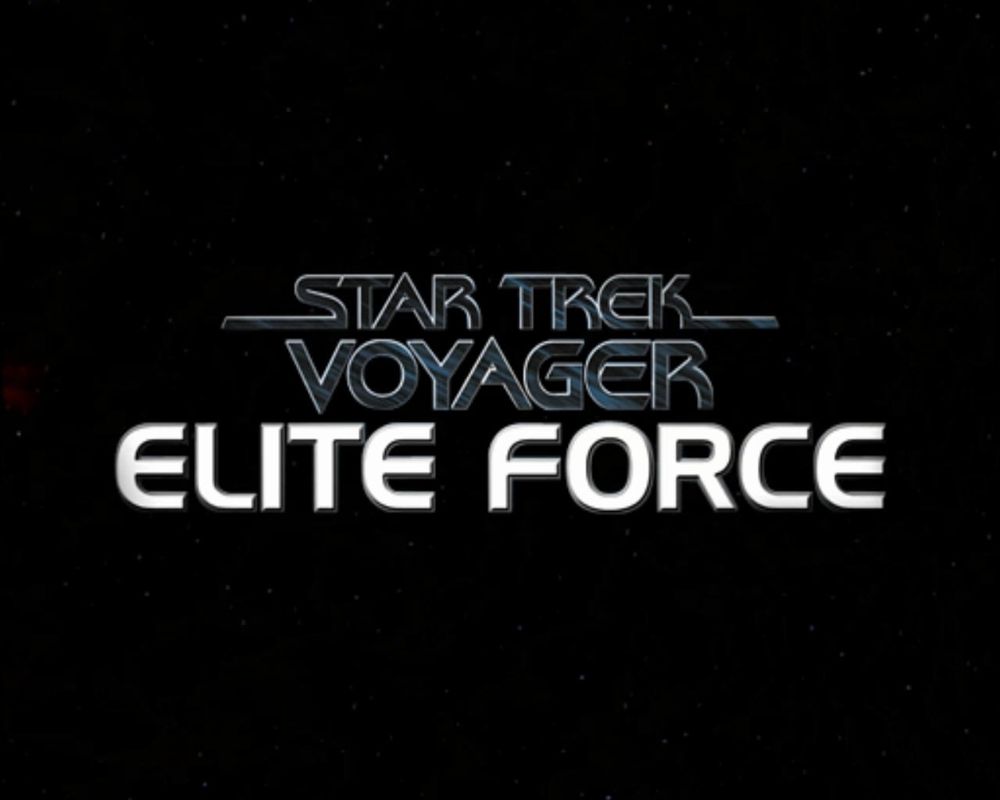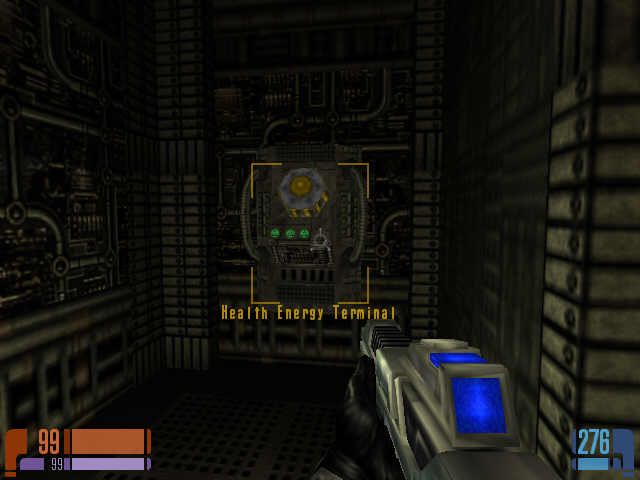Retro Replay Review
Gameplay
Star Trek: Voyager – Elite Force delivers a robust first-person shooter experience built on the id Tech 3 (Quake III Arena) engine, seamlessly blending fast-paced firefights with occasional stealth sequences. As Ensign Alex Munro, you command the Hazard Team through a variety of mission objectives: from securing derelict hallways strewn with debris to hacking consoles under the constant threat of Klingon patrols. Weapon balance is expertly tuned—your standard Phaser offers reliable mid-range performance, while specialized armaments like stasis disruptors and grenade launchers provide satisfying tactical depth.
(HEY YOU!! We hope you enjoy! We try not to run ads. So basically, this is a very expensive hobby running this site. Please consider joining us for updates, forums, and more. Network w/ us to make some cash or friends while retro gaming, and you can win some free retro games for posting. Okay, carry on 👍)
Ammo management feels and sounds futuristic. Certain weapons recharge their own energy cells over time, encouraging you to swap tools rather than hoard conventional rounds. Other devices rely on collectible cartridges or power cells salvaged from the wreckage of enemy ships and terminals. This dual-system forces you to adapt on the fly, choosing between conserving a trusty hand phaser or unleashing high-impact plasma rounds against a Borg Scout.
Munro rarely ventures alone. Up to three AI-driven teammates accompany you, each with distinct behavior patterns that enrich mission flow. They can draw enemy fire, hack doors, or provide covering fire, all while scripted events and cutscenes dynamically react to their presence. At moments, you’ll split from the group for stealth recon, planting tricorder beacons and evading energy sensors before reuniting for a coordinated strike—and the AI holds up surprisingly well under pressure.
Graphics
Leveraging the Quake III engine, Elite Force showcases polished environments that capture the Star Trek aesthetic with striking fidelity. Interior corridors of the U.S.S. Voyager feel lived-in, featuring ambient lighting that pulses with the ship’s warp core resonance. From the slick metal textures of the hazard team’s uniforms to the flickering consoles in the shuttle bay, each detail helps immerse you in the 24th-century setting.
Character models for Munro, the Hazard Team, and key NPCs adhere closely to the Voyager art direction. Facial animations during cutscenes may appear slightly stiff by modern standards, but their emotive choreography and voice performances more than compensate. Enemies like the menacing Borg drones and prowling Klingons boast unique silhouettes and animations, ensuring every firefight feels distinct and visually engaging.
Exterior vistas around the graveyard station remain a standout, with distant starfields and colossal wrecks looming against the void. Particle effects—phaser beams, plasma trails, and explosive debris—are crisp and colorful, offering gratifying feedback when shots land. Even on contemporary hardware, the game’s performance stays solid, with smooth frame rates that keep combat crisp and responsive.
Story
The narrative thrust begins when Voyager is yanked out of normal space and into a mysterious graveyard of abandoned vessels, anchored by an ominous station at its center. Your role as Second-in-Command of the Hazard Team places you at the heart of the crew’s struggle to uncover who—or what—pulled Voyager into this cosmic trap. This setup not only taps into classic Star Trek themes of exploration and survival but also offers fresh intrigue with the unknown conspiracies lurking in the wreckage.
Mission structures often revolve around pieces of a larger puzzle: examine Borg assimilators for clues, rescue crewmembers from Klingon boarding parties, or investigate alien life-forms indigenous to the station complex. Dialogue exchanges with Janeway and Tuvok lend authenticity to the canon, while a handful of player choices—such as prioritizing rescue efforts or opting for stealth over confrontation—affect the tone of subsequent encounters.
Cutscenes are interwoven smoothly, using in-engine assets to preserve continuity with the gameplay experience. While the overarching plot maintains a steady pace, smaller character moments—overheard conversations in the mess hall, comm badge exchanges with friendly crewmates—add depth and remind you that even amid galactic peril, the heart of Star Trek is its people.
Overall Experience
Elite Force stands as a high-water mark for licensed shooters, balancing fan service with solid gameplay mechanics. The fusion of combat, exploration, and light puzzle-solving ensures that no two levels feel identical, and the Hazard Team dynamic injects variety as you coordinate strategies in cramped corridors or vast hangar bays. Whether you prefer charging in phaser blazing or slipping past enemy lines with a tricorder in hand, the game accommodates multiple playstyles.
Replay value is further bolstered by the “Holomatch” multiplayer mode, where classic deathmatch and team-based scenarios let you duke it out in iconic Voyager locales. Even without a robust online community today, local matches still offer fun replays, and mods for PC extend the life span with custom maps and expanded mechanics.
For newcomers and die-hard Star Trek fans alike, Elite Force provides an immersive journey through perilous environments, memorable set pieces, and a narrative that respects the canon while carving its own path. Its engaging combat, atmospheric graphics, and strong storytelling combine into a cohesive whole that remains compelling more than two decades after its original release.
 Retro Replay Retro Replay gaming reviews, news, emulation, geek stuff and more!
Retro Replay Retro Replay gaming reviews, news, emulation, geek stuff and more!









Reviews
There are no reviews yet.